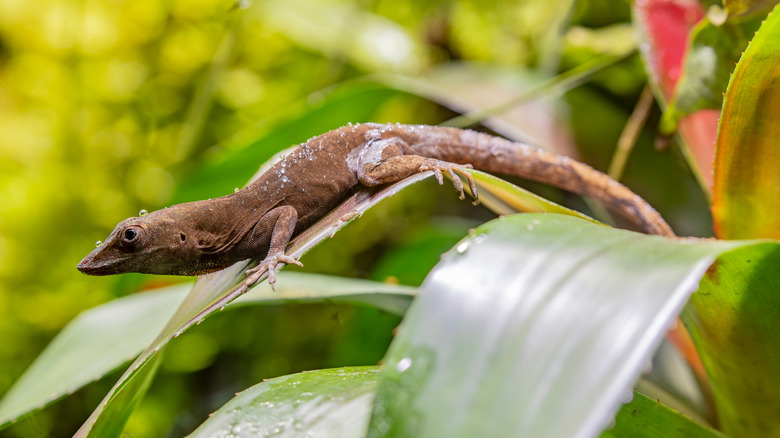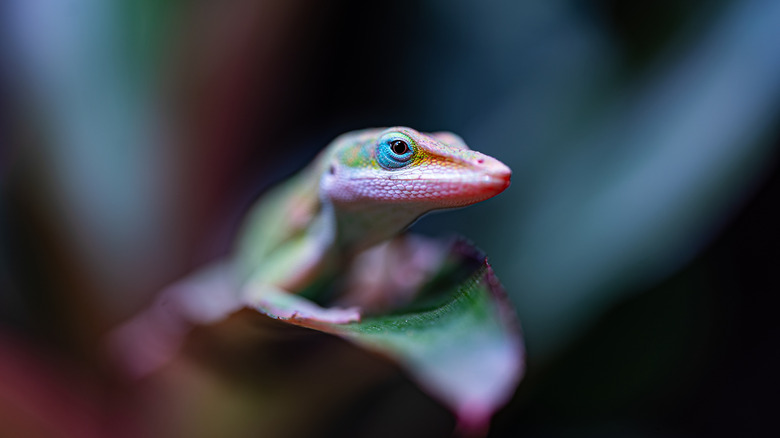Lizard Genetics Are Giving Scientists A Completely New Model For Evolution
In tropical climates, lizards are everywhere. It can be a bit wild to see, and they come in all shapes and sizes. They seem a tad superfluous in such large varieties leaving one to wonder, what purpose do these reptiles truly serve? According to a new research report published in Evolution Letters, they may actually be crucial to understanding the relationship between microevolution and macroevolution. The paper introduces the first mathematical model that uses data from genetic covariance matrices or G-matrices, to quantify the macroevolution of species via short-term natural selection. In other words, the new model helps researchers delve into how genetic relationships evolve over time, both across short and long time periods.
Here's the interesting part: That mathematical model was originally developed for finance to help visualize how investment portfolios and share prices are related over time. It was modified "to the lizard data," according to Dr. Simone Blomberg, who spearheaded the study. Believe it or not, economics has played a role in evolutionary biology "since the time of Charles Darwin more than 160 years ago," Dr. Blomberg told Phys.org. The model in the study was used to analyze the genetic traits of a Central American lizards in the genus, Anolis. The research team studied seven different species of Anolis and variations in eight different traits from leg bone lengths and jaw size to head width. Using the mathematical model, the relationship between those varying traits and the evolution of the Anolis could be visualized. However, the study does mention some difficulties fitting "both simulated and real data" meaning this research is less a big eureka moment, and more an incremental step in the right direction.
Why is this mathematical model a big deal?
As you can expect with most research projects like this, more information and data are necessary to build a complete picture. But this is the first time that the relationship between traits that evolve together have been modeled mathematically. To clarify, microevolution involves the small-scale or minor changes in allele frequencies (gene variants) over time that eventually leads to mutations, natural selection, and new gene patterns. We've known it happens for a long time, but this particular study could help us better understand how that leads to macroevolution, which is simply the large-scale change of an entire species over time.
To bring it to a more cohesive point, this study is a first step in allowing researchers to build a visualization of the evolution of a species with advanced geometrical methods. It could theoretically be used to better understand evolution as a whole. It could also be used to test theories on trait convergence, natural selection, and other evolutionary processes. Why does natural selection play out a certain way? How would that apply to the species living today? A working mathematical model like this could explain a lot about evolution and allow for more quantifiable testing, and that's why it's exciting.

